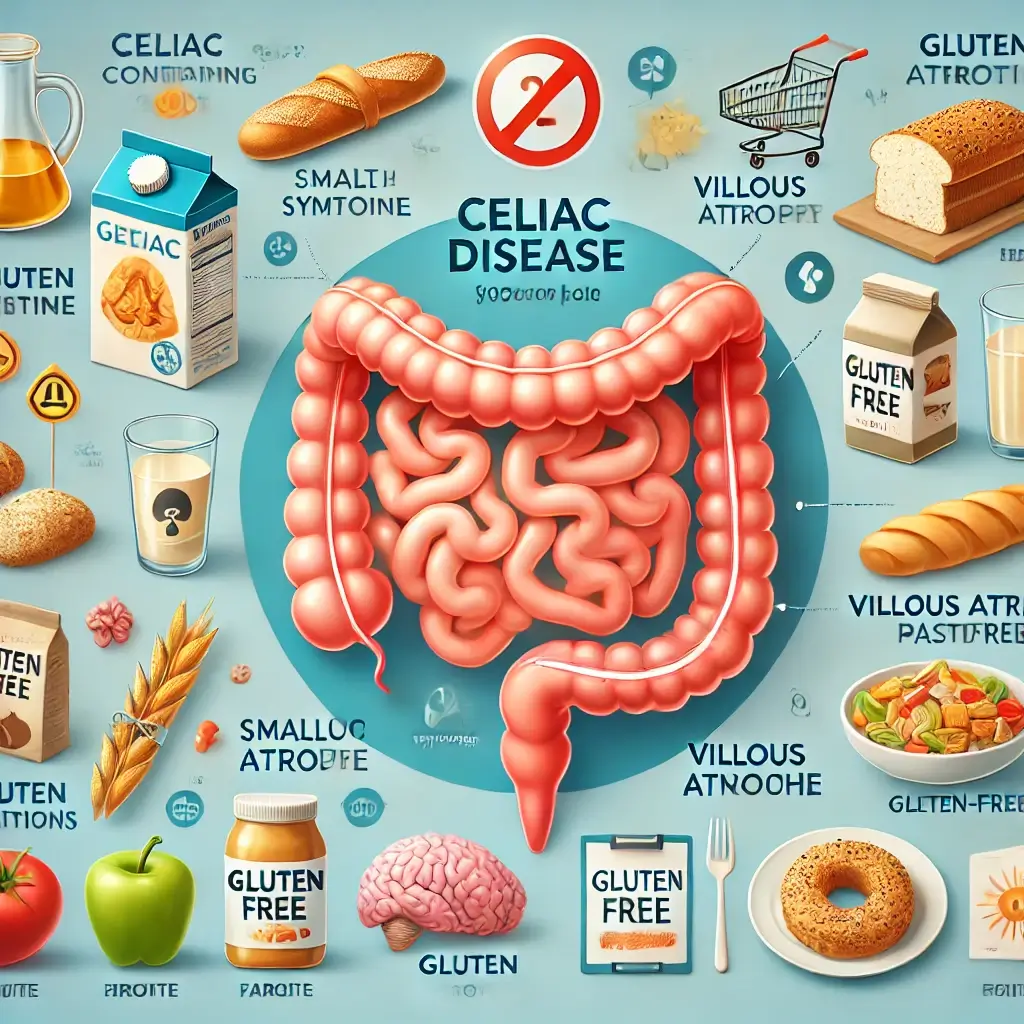Understanding Celiac Disease and Its Global Impact
Celiac disease is a chronic autoimmune disorder affecting roughly 1% of the global population (Fasano et al., 2015). This condition is triggered when individuals with a genetic predisposition consume gluten, a protein found in wheat, barley, and rye. Gluten ingestion initiates an abnormal immune response, damaging the lining of the small intestine. This damage hinders nutrient absorption, leading to malnutrition, osteoporosis, infertility, and other complications if left untreated.
Variable Manifestation and Detection Challenges
Celiac disease can manifest at any age, presenting a wide spectrum of symptoms that range from severe gastrointestinal distress to seemingly unrelated issues like anemia and fatigue. This variability complicates timely diagnosis. Many individuals remain unaware of their condition until significant damage occurs. Recent advancements in medical research have highlighted the necessity of early detection and strict adherence to a gluten-free diet as the only effective treatment.
Article Purpose and Focus
This article aims to provide an in-depth exploration of celiac disease, focusing on its symptoms, diagnostic processes, and the essentials of gluten-free living. By understanding the complexities of this condition, affected individuals and caregivers can take proactive steps toward better health and well-being.
Understanding Symptom Variations
The symptoms of celiac disease vary widely between individuals and can sometimes be absent altogether. Common presentations include:
Classic Digestive Symptoms: Children are more likely to experience classic symptoms such as chronic diarrhea, bloating, gas, abdominal pain, and growth failure (National Institute of Diabetes and Digestive and Kidney Diseases [NIDDK], 2021).
Atypical Symptoms in Adults: Adults often present with non-digestive symptoms such as fatigue, weight loss, iron-deficiency anemia, osteoporosis, depression, or neuropathy. These atypical manifestations can delay diagnosis and treatment (Fasano et al., 2015).
Silent Celiac Disease: Some individuals with celiac disease exhibit no overt symptoms. Despite the absence of noticeable signs, intestinal damage still occurs, posing risks for long-term complications like cancer or autoimmune diseases (Catassi & Fasano, 2008).
Diagnostic Approaches and Methods
Accurate diagnosis of celiac disease is crucial for effective management. It typically involves a combination of tests:
Blood Tests: Serologic tests, including tissue transglutaminase antibodies (tTG-IgA) and endomysial antibodies (EMA), are highly sensitive and specific for celiac disease. These tests are often the first step in screening suspected cases (NIDDK, 2021).
Endoscopy and Biopsy: A definitive diagnosis requires confirmation through endoscopy, where tissue samples from the small intestine are examined for characteristic damage, such as villous atrophy and crypt hyperplasia.
Genetic Testing: HLA-DQ2 and HLA-DQ8 gene testing helps rule out celiac disease in ambiguous cases, as these genetic markers are absent in individuals without the condition (Fasano et al., 2015).
Managing a Gluten-Free Lifestyle
The cornerstone of managing celiac disease is adherence to a strict gluten-free diet, which can reverse intestinal damage and alleviate symptoms. However, implementing such a lifestyle requires significant vigilance and education.
Dietary Changes: Individuals must eliminate all gluten-containing foods, including bread, pasta, and baked goods, as well as unexpected sources like sauces, soups, and processed snacks. Certified gluten-free labels provide a helpful guide for safe consumption.
Hidden Gluten Sources: Cross-contamination and hidden sources of gluten—such as in condiments, medications, or dietary supplements—can derail efforts to maintain a gluten-free diet. Reading ingredient labels meticulously is essential.
Support Systems: Transitioning to a gluten-free lifestyle can be challenging, both emotionally and logistically. Registered dietitians, support groups, and online communities offer invaluable guidance and encouragement.
Research Developments and Future Directions
Emerging studies emphasize the importance of early diagnosis and non-invasive diagnostic tools. For example, researchers are exploring the use of blood biomarkers to detect intestinal permeability and inflammation as alternatives to biopsy (Lebwohl et al., 2018). Advances in gluten detection technology are also aiding individuals in identifying hidden gluten in foods, improving dietary compliance.
Moreover, awareness campaigns and legislative efforts, such as standardized gluten-free labeling laws in the U.S. and Europe, have significantly enhanced the safety and accessibility of gluten-free products (NIDDK, 2021).
Final Thoughts and Recommendations
Celiac disease, though a lifelong condition, is manageable with proper diagnosis and strict adherence to a gluten-free diet. By recognizing its symptoms, understanding diagnostic pathways, and embracing a gluten-free lifestyle, individuals with celiac disease can achieve optimal health and reduce the risk of long-term complications. As research and awareness continue to advance, those affected by celiac disease can look forward to improved diagnostic tools and dietary resources, making gluten-free living more accessible and less burdensome.
If you suspect you or a loved one has celiac disease, consult a healthcare provider for proper evaluation and guidance. Early intervention and education are key to thriving despite this challenging condition.
Academic Sources
Catassi, C., & Fasano, A. (2008). Celiac Disease Diagnosis: Simple Rules Are Better Than Complex Algorithms. American Journal of Medicine, 121(8), 598–599. https://doi.org/10.1016/j.amjmed.2008.01.047
Fasano, A., et al. (2015). The spectrum of celiac disease: 2012 consensus update. Gut, 63(6), 694–704.
Lebwohl, B., Sanders, D. S., & Green, P. H. R. (2018). Coeliac disease. Lancet, 391(10115), 70–81. https://doi.org/10.1016/S0140-6736(17)31796-8
National Institute of Diabetes and Digestive and Kidney Diseases. (2021, July 29). Celiac Disease. National Institutes of Health. https://www.niddk.nih.gov/health-information/digestive-diseases/celiac-disease
